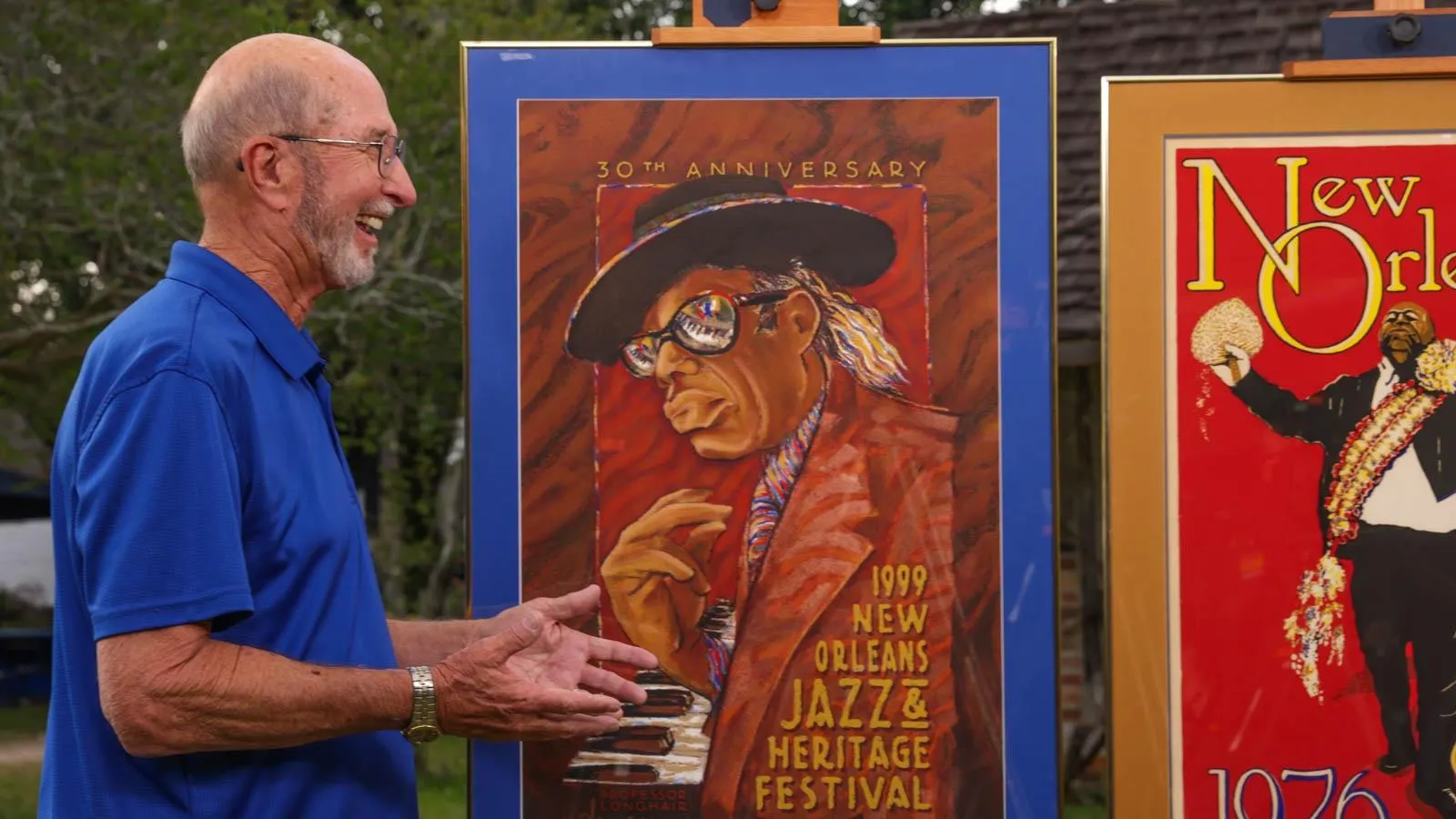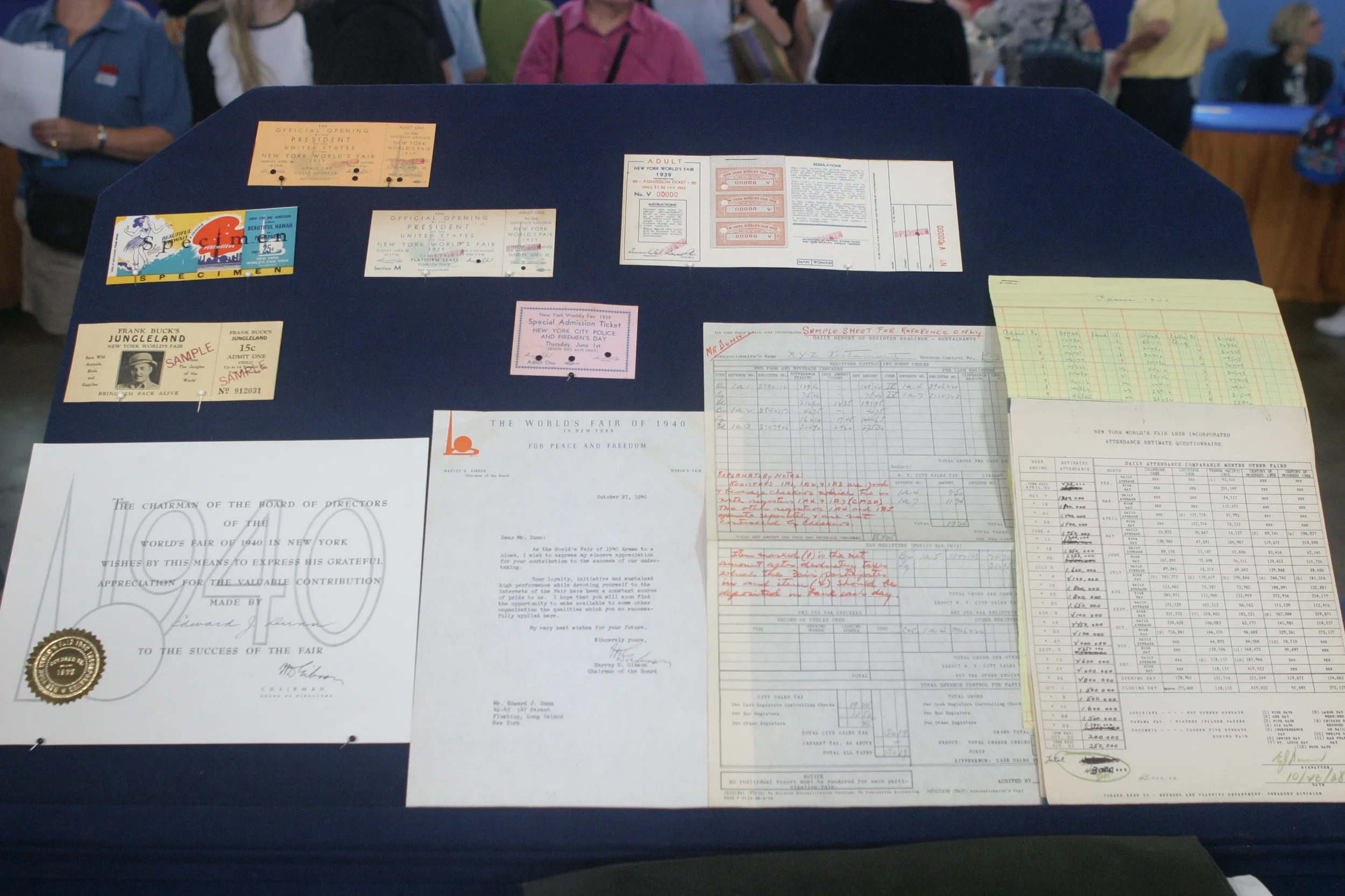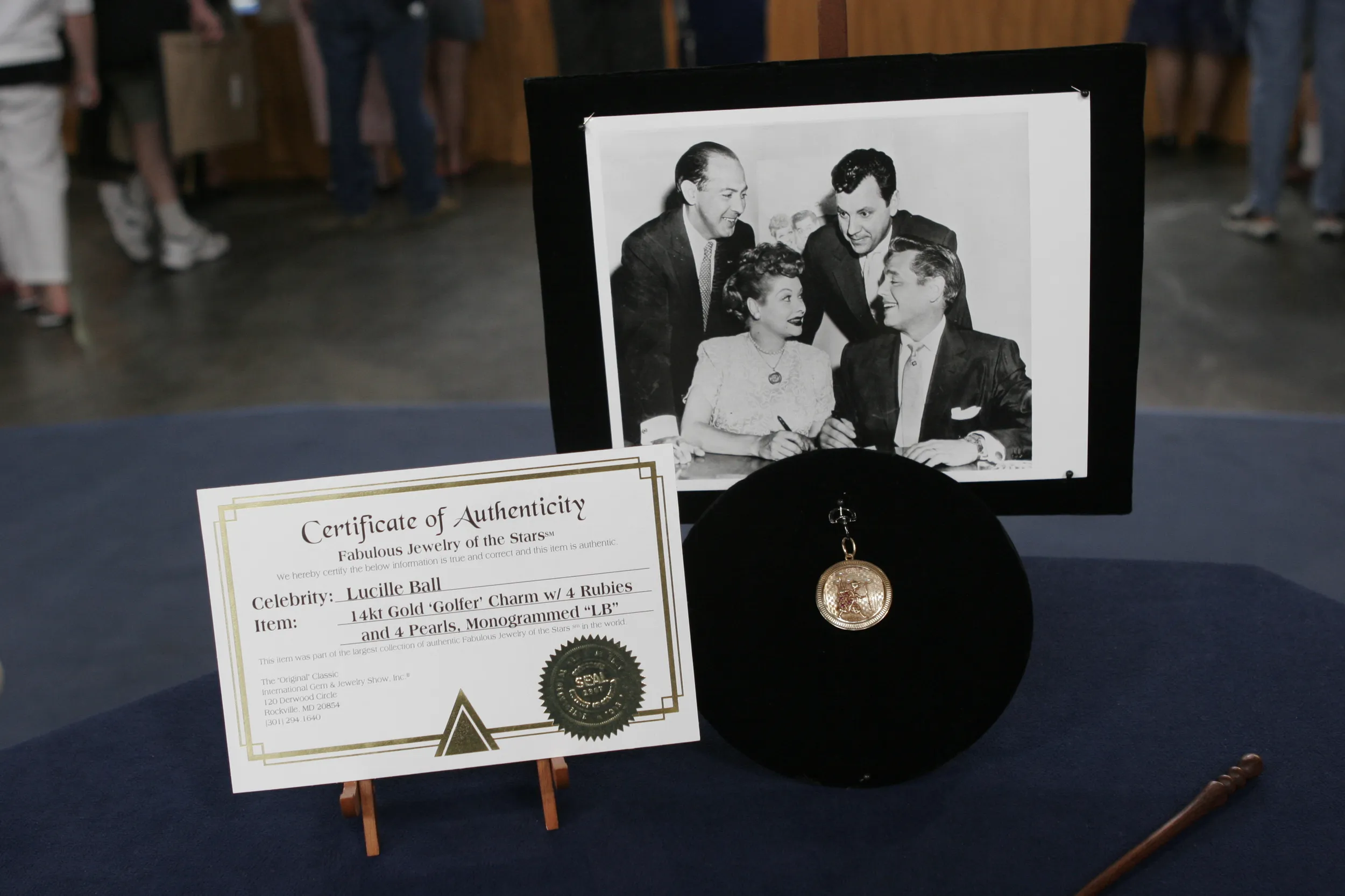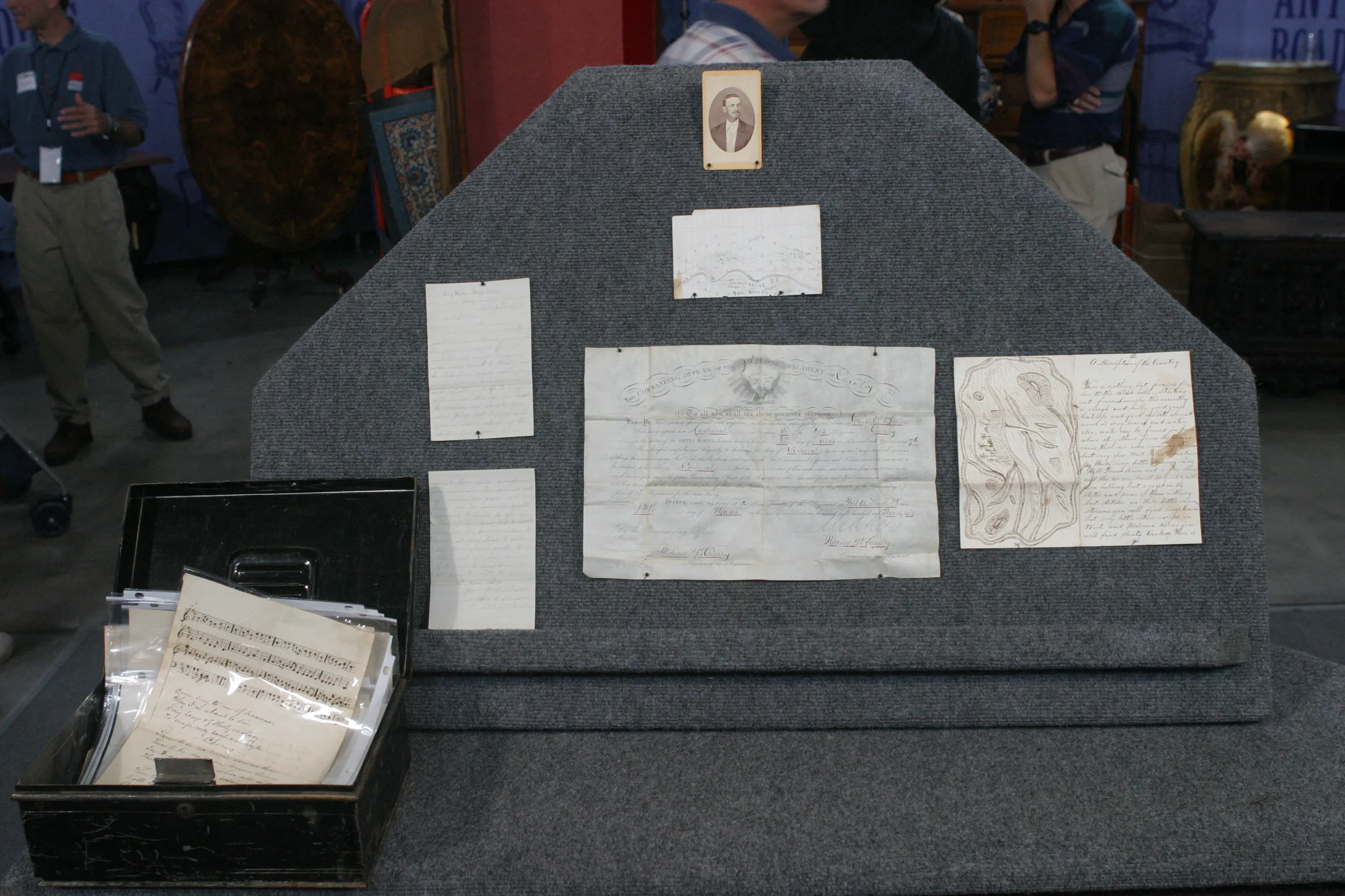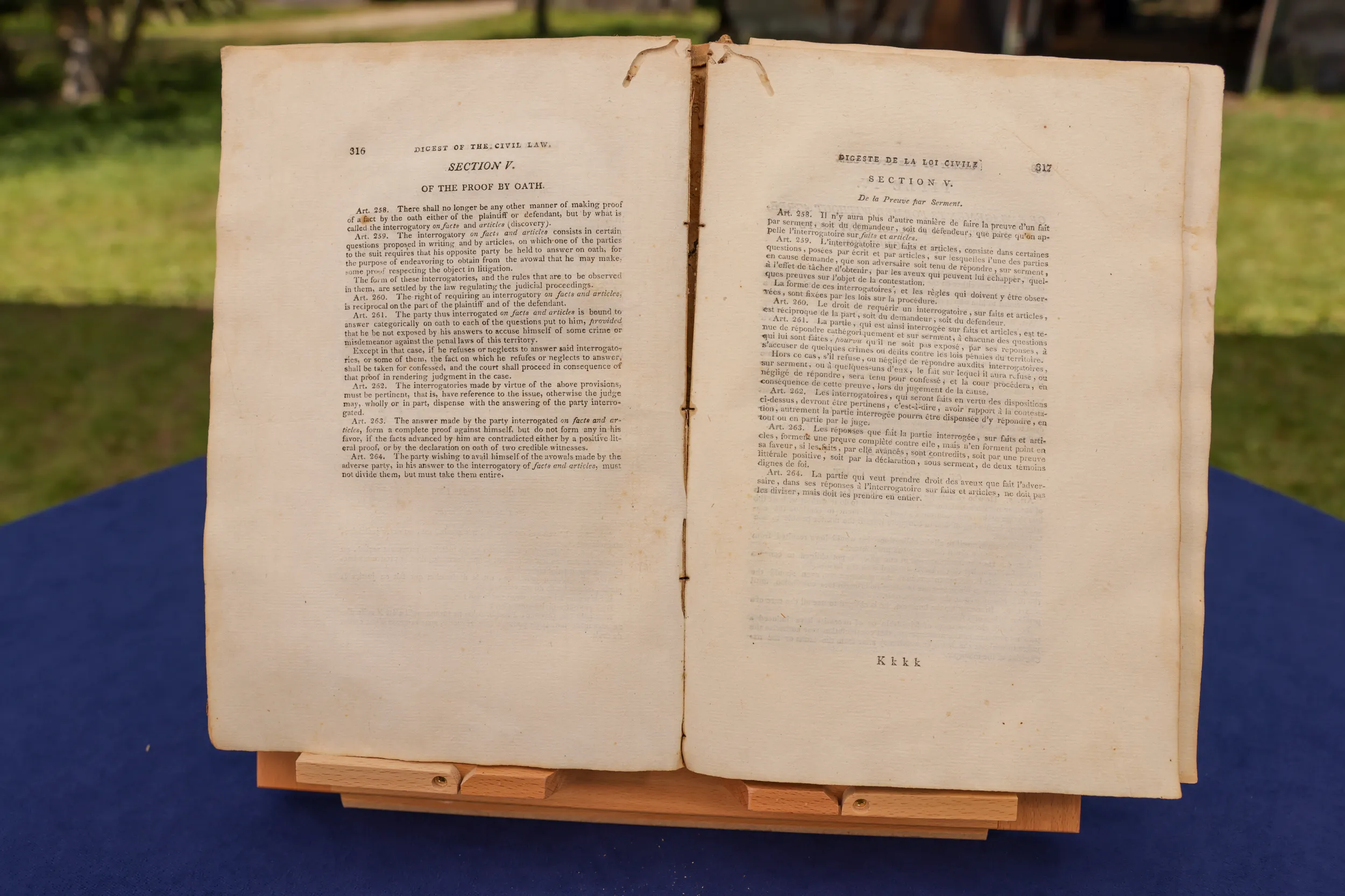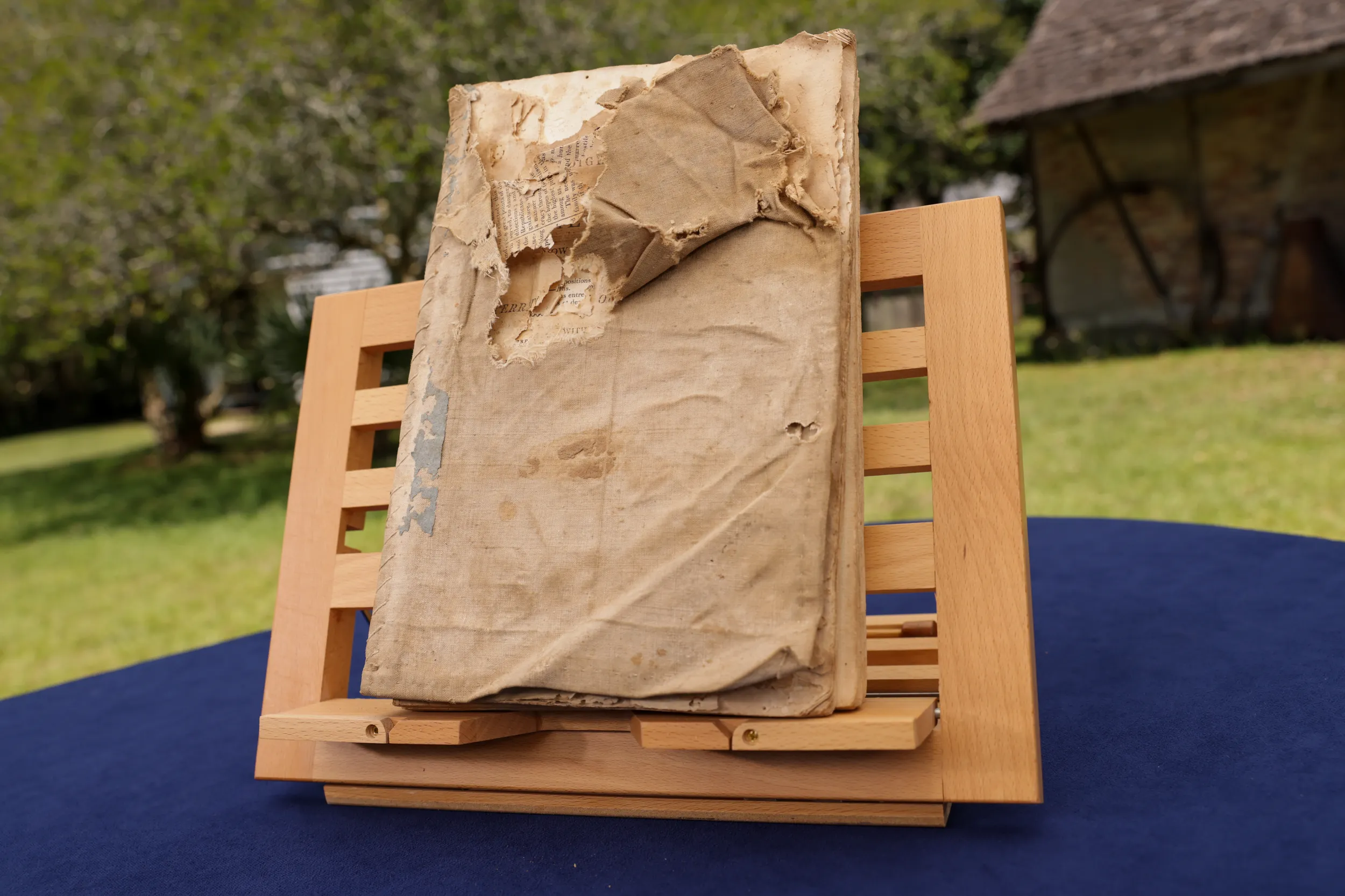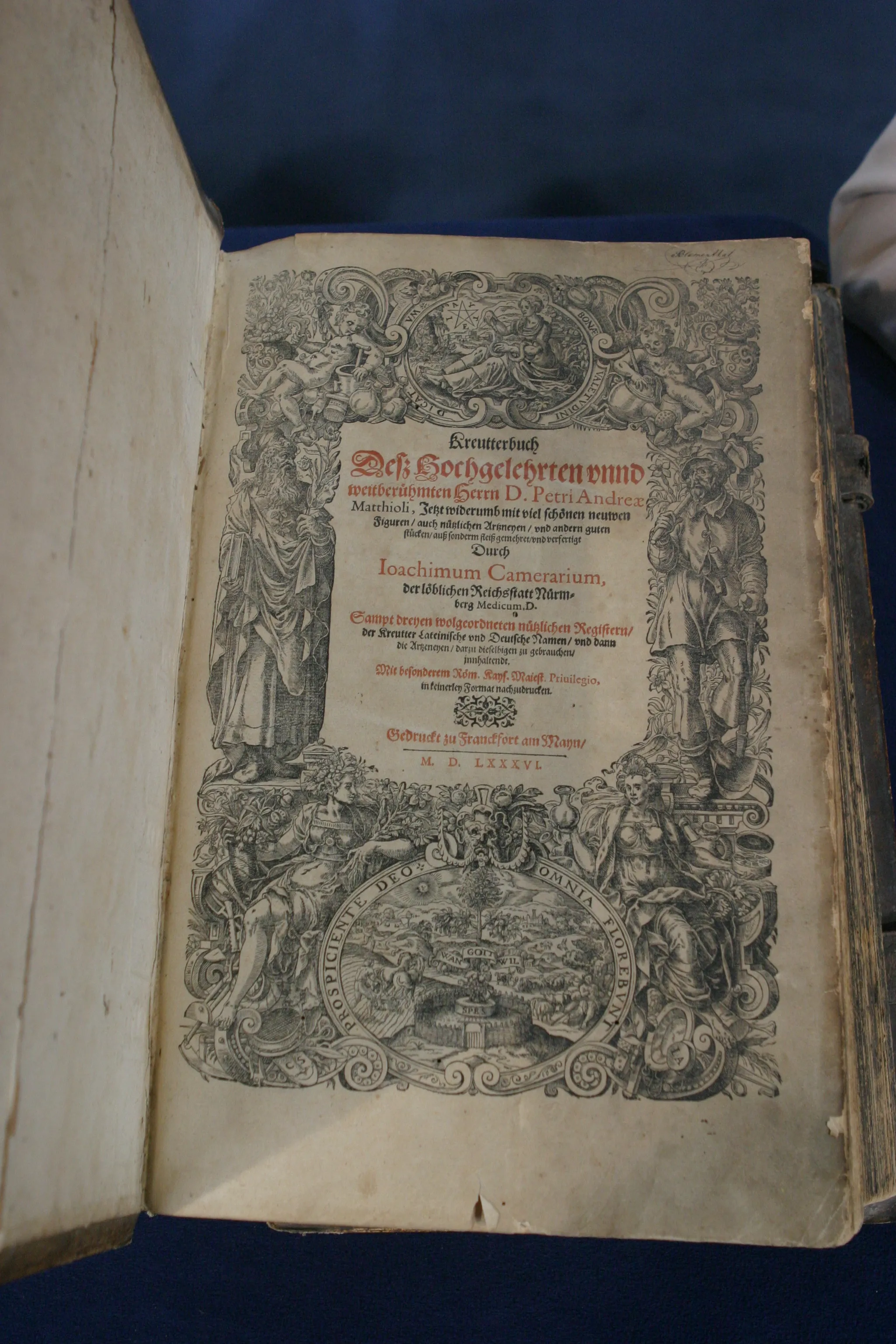GUEST: This book was gifted to my father, and he gifted it to me. It was a traveling book of laws used by Don Juan Filhiol through the Louisiana Territory.
APPRAISER: It's the original law book...
GUEST: Mm-hmm.
APPRAISER: ...for the territory. This was published in 1803, the same year that, uh, Thomas Jefferson purchased...
GUEST: Yes.
APPRAISER: ...the Louisiana Territory from the French.
GUEST: Right, yes, sir. You can see how many miles it looks like it's been traveled.
APPRAISER: This book, obviously, is in extraordinarily fragile condition.
GUEST: Mm-hmm.
APPRAISER: If you would help me...
GUEST: I sure will.
APPRAISER: ...we'll try to turn this as gently as we can.
GUEST: Sure will, there we go.
APPRAISER: To open it, just to give the folks a look at the title page, The Digest of the Civil Law. It was published in New Orleans in 1803. The book is bilingual. It's printing the newly minted laws of Louisiana Territory here in English on the versos and in French on the rectos. Don Juan's real name was Jean Baptiste Filhiol. Don Juan was a nickname of sorts. He's the author of our book. What do we know about Don Juan?
GUEST: He was responsible for spreading the laws through the territory, and he also established Fort Miro, that is now Monroe.
APPRAISER: Yes.
GUEST: He was a very big landowner.
APPRAISER: He was apparently a very, very successful early explorer.
GUEST: Mm-hmm.
APPRAISER: Frenchman. In the early 1800s, it was quite common in this country for white people in power to have enslaved people. Don Juan Filhiol
also was a plantation owner and a slave holder. It's an ugly part of our country's history, but it's one that we need to acknowledge. You say your
father gifted it to you.
GUEST: Yes.
APPRAISER: But who gifted it to him?
GUEST: My father is an attorney in Monroe, and he handled estates and successions for families, and this family is one of the estates that he handled. And when the last living heir, uh, Theo, passed away, her son gave this to my dad in appreciation for handling her estate.
APPRAISER: Mm-hmm. This was the copy, clearly, he road-used to bring the laws to the new territory and the new citizens?
GUEST: Yes. I can't imagine how that turned out for him. (laughs) Or how he was greeted with that, but yes, sir.
APPRAISER: Hm, it's absolutely fascinating. So despite its condition, this book, in my opinion, needs a professional conservator. It could be stabilized
and restored to a certain extent.
GUEST: Right.
APPRAISER: ...and preserved. This book is printed on cotton rag paper.
GUEST: Okay.
APPRAISER: The wood pulp paper that we're so familiar with today...
GUEST: Uh-huh.
APPRAISER: ...didn't come into use until, mm, 1870s. See this little hole? It's a bookworm.
GUEST(chuckling): Hm, a bookworm.
APPRAISER: Even in this condition, I would put a value at retail...
GUEST: Mm-hmm.
APPRAISER: ...of between $2,000 to $3,000 on it.
GUEST: Right, okay.
APPRAISER: For insurance purposes, I would value it at $5,000.
GUEST: Okay, okay.
APPRAISER: Uh, 'cause the, the adage is, you know, find another.
GUEST: Right, sure, yes.
APPRAISER: I think that's going to be hard to do.
GUEST: Well, that's great to know-- we appreciate it, thank you.

